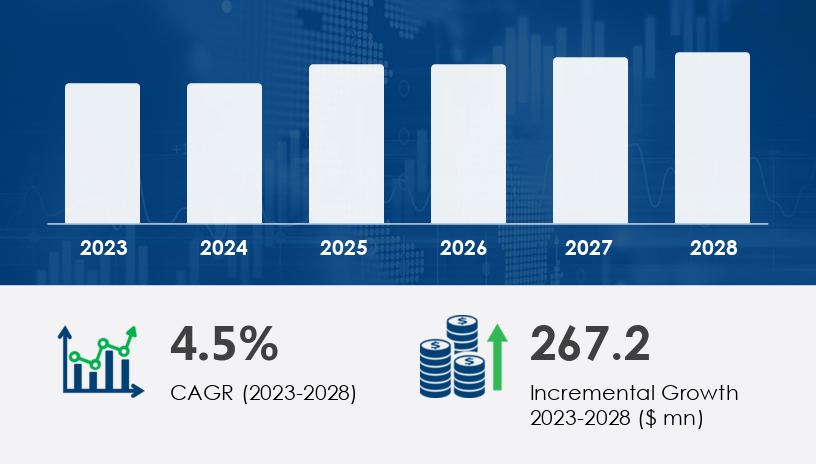The Open System MRI market is poised for significant expansion, with a projected increase of USD 267.2 million at a CAGR of 4.5% from 2023 to 2028. This growth is primarily driven by the increasing prevalence of chronic diseases, a growing geriatric population, and advancements in MRI technology. Open MRI systems offer enhanced patient comfort, making them particularly suitable for individuals with claustrophobia, obesity, or those requiring weight-bearing imaging.
For more details about the industry, get the PDF sample report for free

The Open System MRI Market is witnessing significant growth as advancements in magnetic resonance imaging (MRI) technologies make diagnostic imaging more accessible and patient-friendly. Open MRI systems, including low-field, mid-field, and high-field MRI scanners, are becoming increasingly popular for their ability to provide claustrophobia-friendly environments, ensuring improved patient comfort. These systems utilize non-ionizing radiation, making them safer for patients compared to traditional imaging methods. Additionally, innovations such as wide-bore MRI scanners, which offer greater space for patients, and improvements in noise reduction technologies are enhancing the overall experience. Open MRIs are commonly used in brain imaging, spinal cord imaging, and musculoskeletal MRI, with a focus on soft tissue, nerve, muscle, and blood vessel imaging. Contrast materials, including gadolinium contrast, are often employed to improve image clarity, aiding in tumor detection, inflammation diagnosis, and infection imaging across various fields, such as oncology MRI, neurology MRI, and cardiology MRI.
Rising Prevalence of Chronic Diseases: The escalating incidence of conditions such as cardiovascular diseases, neurological disorders, and musculoskeletal issues is driving the demand for advanced imaging solutions. In the United States, approximately 20.1 million adults aged 20 and older have coronary artery disease, highlighting the need for effective diagnostic tools.
Aging Population: The aging demographic is more susceptible to various health conditions, increasing the demand for diagnostic imaging. In 2022, the geriatric population in the U.S. increased from 16.6% to 17.0%, further emphasizing the need for accessible imaging solutions.
Technological Advancements: Innovations in MRI technology, such as improved image resolution and faster scan times, are enhancing the capabilities of open MRI systems, making them more attractive to healthcare providers.
See What’s Inside: Access a Free Sample of Our In-Depth Market Research Report
High Initial and Maintenance Costs: The acquisition and upkeep of open MRI systems involve significant financial investment, which can be a barrier for smaller healthcare facilities.
Limited Availability: Despite growing demand, the availability of open MRI systems remains limited compared to traditional closed MRI systems, affecting accessibility.
Low Field Scanners: These systems are experiencing significant growth due to their affordability and ability to accommodate a wide range of patients.
Medium and High Field Scanners: While offering superior image quality, these systems are more expensive and less prevalent in the market.
North America: Dominates the market, accounting for 36% of global growth, driven by advanced healthcare infrastructure and a high prevalence of chronic diseases.
Europe: Expected to witness significant growth, with the market size projected to reach USD 593.08 million by 2030, growing at a CAGR of 7.43%.
Asia-Pacific: Emerging as a key market due to increasing healthcare investments and a rising burden of chronic diseases.
Software Advancements: The integration of artificial intelligence and machine learning algorithms is enhancing image processing and diagnostic accuracy in open MRI systems.
Portable and Compact Designs: Manufacturers are developing more compact and portable open MRI systems, expanding their use in outpatient clinics and mobile imaging units.
Research into the Open System MRI Market reveals that the integration of AI algorithms and advanced image reconstruction techniques is accelerating the efficiency and accuracy of scans. These technologies enable faster scan speeds while maintaining high levels of image quality, crucial for applications like 3D imaging, vascular imaging, and breast imaging. Patient positioning is also improving, with enhanced MRI coils and weight-bearing imaging techniques that offer more comprehensive views of the body. As a result, MRI systems are increasingly utilized across diverse medical specialties, including gastroenterology MRI, cardiac imaging, and musculoskeletal MRI. Additionally, the growing demand for MRI scanners compatible with metal implants, such as pacemakers and insulin pumps, is contributing to market expansion. These advancements, alongside continuous improvements in scan precision, are driving the adoption of open MRIs, ensuring better outcomes for patients and healthcare providers alike.
Investment in Low Field Scanners: Healthcare providers should consider investing in low field open MRI systems to offer cost-effective and patient-friendly imaging solutions.
Focus on Technological Integration: Adopting advanced software and AI technologies can improve diagnostic capabilities and operational efficiency.
Expansion into Emerging Markets: Exploring opportunities in Asia-Pacific and other emerging regions can drive market growth and diversify revenue streams.
Get more details by ordering the complete report
The Open System MRI market is expected to continue its growth trajectory, with advancements in technology and increasing demand for non-invasive diagnostic tools. Healthcare providers and manufacturers should focus on innovation and accessibility to capitalize on emerging opportunities.
Regulatory Hurdles: Navigating the complex regulatory landscape for medical devices can delay product development and market entry.
Market Competition: Intense competition among existing and new players can impact market share and profitability.
Enhance Patient-Centric Offerings: Develop open MRI systems that prioritize patient comfort and accessibility to attract a broader patient base.
Collaborate with Healthcare Providers: Establish partnerships with hospitals and clinics to understand their needs and tailor solutions accordingly.
Invest in Research and Development: Allocate resources to R&D to stay ahead of technological advancements and meet evolving market demands.
The Open System MRI market presents significant growth opportunities driven by technological advancements and increasing demand for patient-friendly imaging solutions. By focusing on innovation, accessibility, and strategic partnerships, stakeholders can capitalize on this expanding market.
For a comprehensive analysis and strategic insights into the Open System MRI market, download our in-depth research report. Stay informed and make data-driven decisions to navigate this evolving market landscape.
Safe and Secure SSL Encrypted